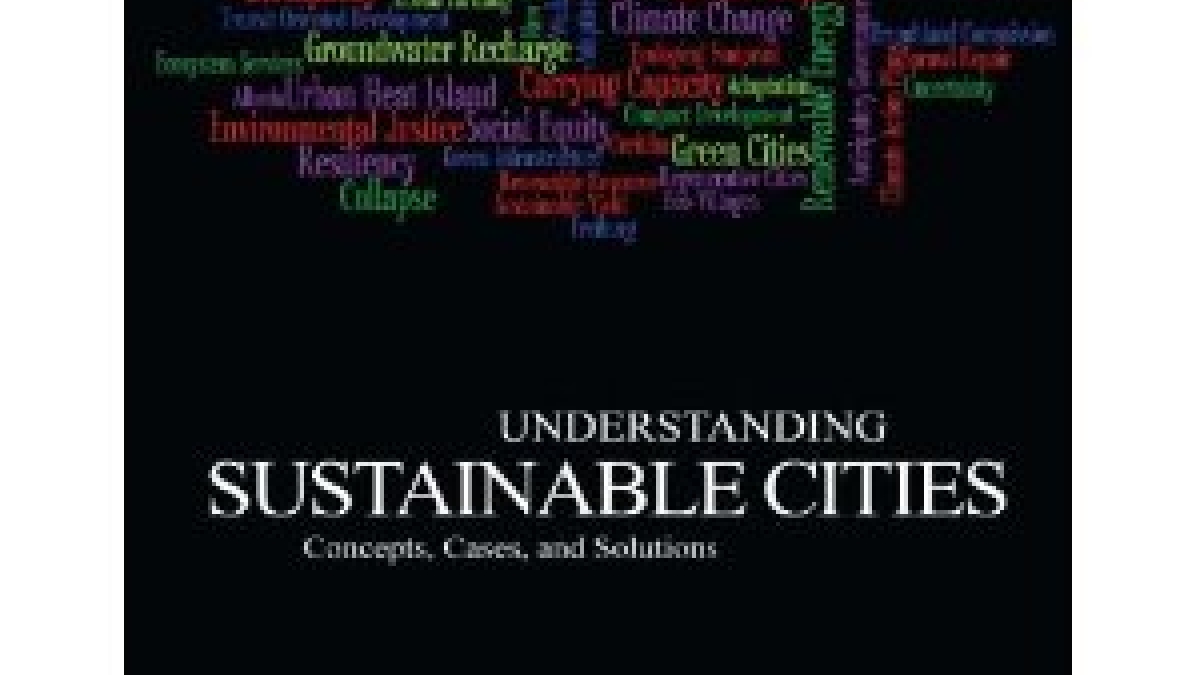Professor, student publish new textbook 'Understanding Sustainable Cities'

For the first time in history, the majority of the world’s population resides in cities and cities are responsible for consuming 75 percent of the world’s energy and emitting 80 percent of the world’s greenhouse gases. Given the dominant presence of cities in the global context, they provide a fitting focus for a first introduction to sustainability.
With this perspective, Arizona State University professor David Pijawka created the course “Sustainable Cities” in 2004, and has taught the course each year since then, while expanding its content with numerous co-instructors from the university community. Its approximate annual enrollment is 800 students, the largest enrollment of any of ASU’s sustainability courses.
Key content of the course is now available to a much larger audience, in the form of a newly-published book that Dr. Pijawka co-authored with doctoral student Martin A. Gromulat, “Understanding Sustainable Cities: Concepts, Cases, and Solutions” (Kendall Hunt 2012).
The book explores key concepts of sustainability – from ecological footprints, life-cycle accounting, resiliency, and ecosystem services, and covers sustainability from its principal dimensions -- transportation to water resources to environmental justice – each framed around the urban experience. Following several introductory chapters that include a history of sustainability, each chapter focuses on a different dimension of sustainability, and is authored by one or several ASU researchers with recognized expertise in the topic. Because each of the authors initially presented their topic as a lecture for the Sustainable Cities course, the chapters introduce fundamentals, integrate with the themes of other chapters, and provide important examples of real-world solutions.
The text concludes with a series of course assignments that allow students and faculty to apply the principles and concepts that they are learning. For example, the first chapter of the text introduces the concept of an individual’s ecological footprint – the amount of bioproductive land that is equivalent to the total consumption by people of food, fuel, and consumer products, plus land utilized for waste and assimilation of pollution. In the corresponding assignment, students calculate their own individual ecological footprint and use the results to consider their impact upon the planet.
“For many students, the ecological footprint exercise is a compelling demonstration,” says Wesley Pittman, who took the Sustainable Cities course as an undergraduate and is now working on a master’s degree in urban and environmental planning. “The exercise exposes students on a personal level to what each individual’s impact looks like, and for many, plants a sense of ethical commitment to sustainable practices.”
“Today’s college students comprise the first generation that perceives sustainability as a core value and regards nature as our guide,” writes ASU President Michael Crow in his foreword to the book. “Better integrating the built environment with natural systems will enable us as a society to get on a sustainable path. This book, and the class that it is based on, strives to give students and others the necessary information to help lead us into a sustainable future.”
David Pijawka is a professor of urban planning and Associate Director of the School of Geographical Sciences and Urban Planning, a Senior Sustainability Scholar in the Global Institute of Sustainability, and holds a joint teaching position with planning and sustainability. Martin Gromulat is an attorney and ASU student, focusing on urban and environmental planning policy, sustainable education, and resiliency, with Arizona State University’s School of Geographical Sciences and Urban Planning in ASU’s College of Liberal Arts and Sciences.
Barbara Trapido-Lurie, btl@asu.edu
School of Geographical Sciences and Urban Planning